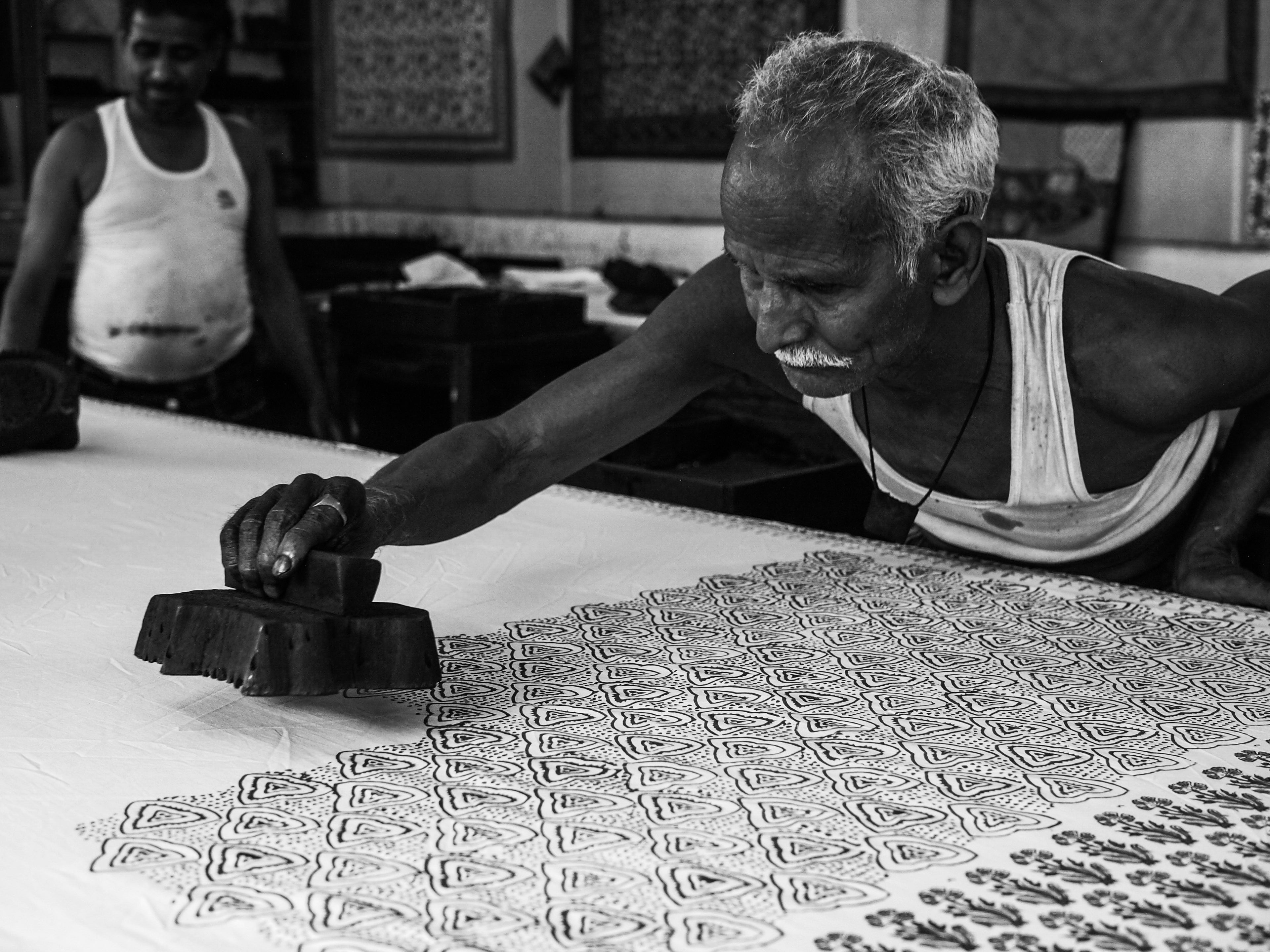Ajrakh print, a centuries-old craft rooted in the regions of Gujarat and Rajasthan, is experiencing a vibrant revival in contemporary fashion. Known for its intricate patterns and deep, natural dyes, Ajrakh has long been a symbol of traditional Indian artistry. Today, this ancient print is being reimagined in modern saree designs, bridging the gap between tradition and innovation.
A Glimpse into History
Ajrakh printing dates back over 4,000 years, with origins linked to the Indus Valley Civilization. The term "Ajrakh" is believed to derive from the Arabic word "Azrak," meaning blue, which is a predominant color in these designs. Traditionally, Ajrakh sarees are created using natural dyes and a painstaking 14-16 step process involving washing, dyeing, printing, and drying. This meticulous method ensures each piece is unique, showcasing the artisan’s skill and patience.
Cultural Significance
Ajrakh prints are more than just patterns; they carry cultural narratives and historical significance. The geometric and floral motifs often symbolize nature, fertility, and the universe, reflecting the rich heritage of the communities that produce them. Wearing an Ajrakh saree is akin to draping oneself in a piece of history, a celebration of India’s diverse cultural tapestry.
Contemporary Revival
In recent years, designers and artisans have breathed new life into Ajrakh prints, integrating them into contemporary saree designs. This resurgence is driven by a growing appreciation for sustainable fashion and a desire to preserve traditional crafts. Modern Ajrakh sarees maintain the authenticity of the ancient techniques while incorporating contemporary elements such as new color palettes, innovative patterns, and versatile draping styles.
Innovation in Design
Today's Ajrakh sarees are not confined to the traditional indigo and red hues. Designers experiment with a wide range of colors, blending natural dyes to create fresh, vibrant looks. Additionally, the fusion of Ajrakh with other fabrics like silk, linen, and cotton adds a modern twist, making these sarees suitable for both casual and formal occasions.
Supporting Artisans
The revival of Ajrakh printing also supports the artisans who have preserved this craft through generations. By purchasing Ajrakh sarees, consumers contribute to the livelihoods of these craftsmen, ensuring the survival of this beautiful tradition. Many initiatives and fashion houses collaborate directly with artisans, fostering an environment of mutual growth and respect.
Conclusion
The resurgence of Ajrakh print in contemporary saree designs is a testament to the timeless appeal of traditional crafts. This blend of ancient techniques with modern aesthetics not only preserves cultural heritage but also offers a unique, stylish choice for today’s fashion-forward individuals. Embrace the beauty and history of Ajrakh sarees and be part of a tradition that continues to inspire and evolve.

